Evercade review: A charming cartridge-based handheld for retro gaming enthusiasts - applegatelont1943
These years, you've got endless ways to represent retro games exploitation emulation on PCs, Boo Pis, operating theater even Android phones—about with varied degrees of performance OR legality. Merely the new Evercade handheld console is tackling retrospective gaming emulation in a highly centred and lawfully legitimate room. Unlike the Recent rising tide of Chinese-based hand-held emulators like the PocketGo V2, Evercade (the accompany) full treatmen with leading publishers to liberate somatogenic cartridges featuring tailored emulation so that each lame plays the way you remember.
If you're a retro game enthusiast looking to retrieve easy, correct, and legal ways to play titles from a variety of gambling eras—outside of buying the original hardware, of course—then the Evercade is worth a hard, drawn-out look.
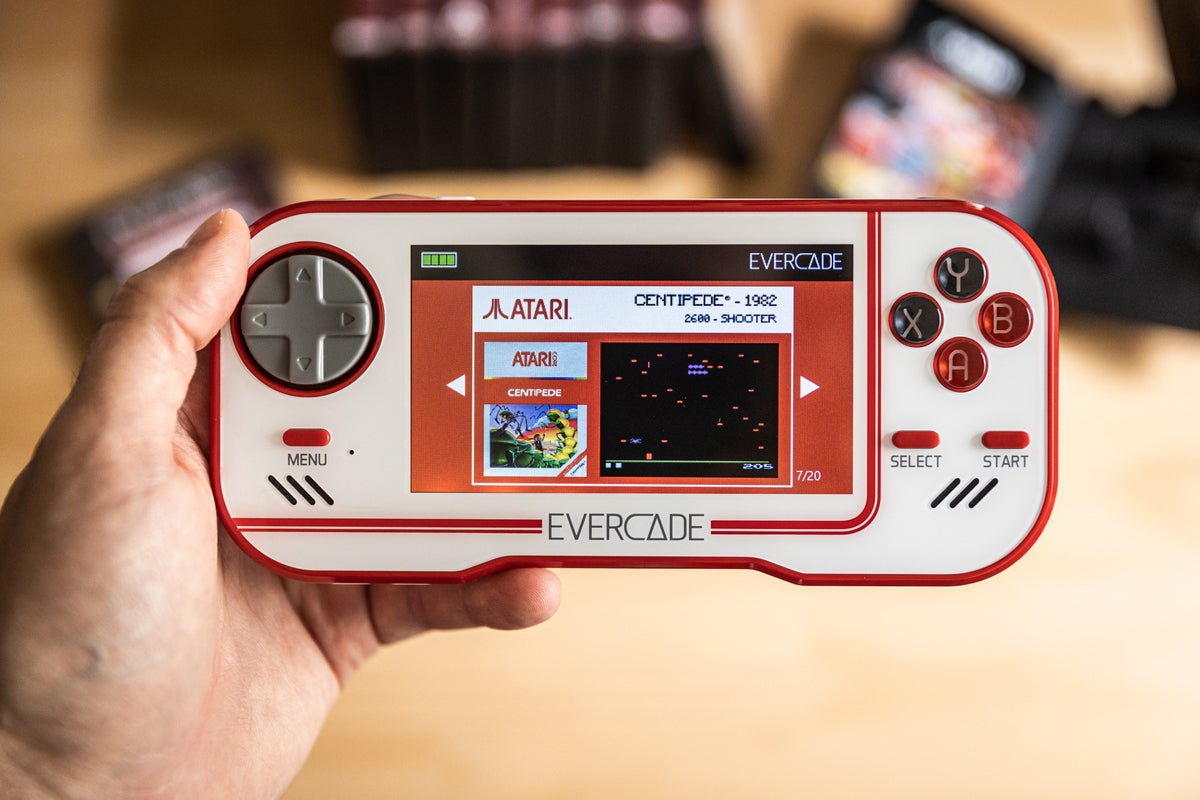 Adam Patrick Murray/IDG
Adam Patrick Murray/IDG The Evercade has a clean and classic look.
What is the Evercade?
The Evercade is a handheld console that emulates classic games. It's roughly the size of it of a Nintendo Switch Lite, with a 2,000mAh battery and a 4.3-inch Liquid crystal display screen (the synoptical size as a Sony PSP) sporting a 16×9 vista ratio. Evercade's quad-core 1.2Ghz Build up processor packs enoughoomph to endure 8- and 16-bit games, with plenty of leftover operating cost to power upcoming releases. Equal goes for the 16×9 screen—whol of the games I tested were conferred in the original 4×3 aspect ratio, with wider aspect ratio systems coming presently.
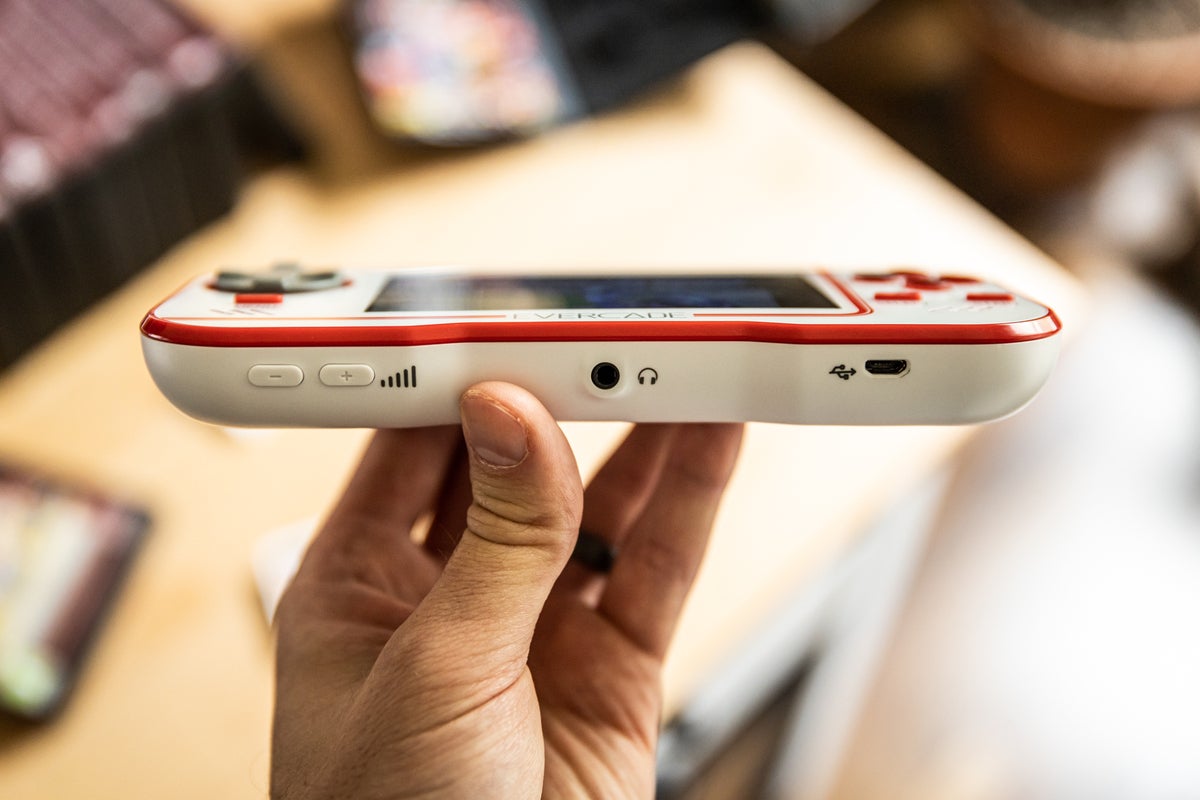 Adam Patrick Murray/IDG
Adam Patrick Murray/IDG For inputs, you'll find a D-Pad, four look buttons, two shoulder buttons, 2 volume buttons, Lead off/Select, and Bill of fare, which is used to access various settings like hold open states. Ports include a Small-USB port for charging, a 3.5mm headphone jack, a Miniskirt-HDMI port for connecting to a TV, and a cartridge slot.
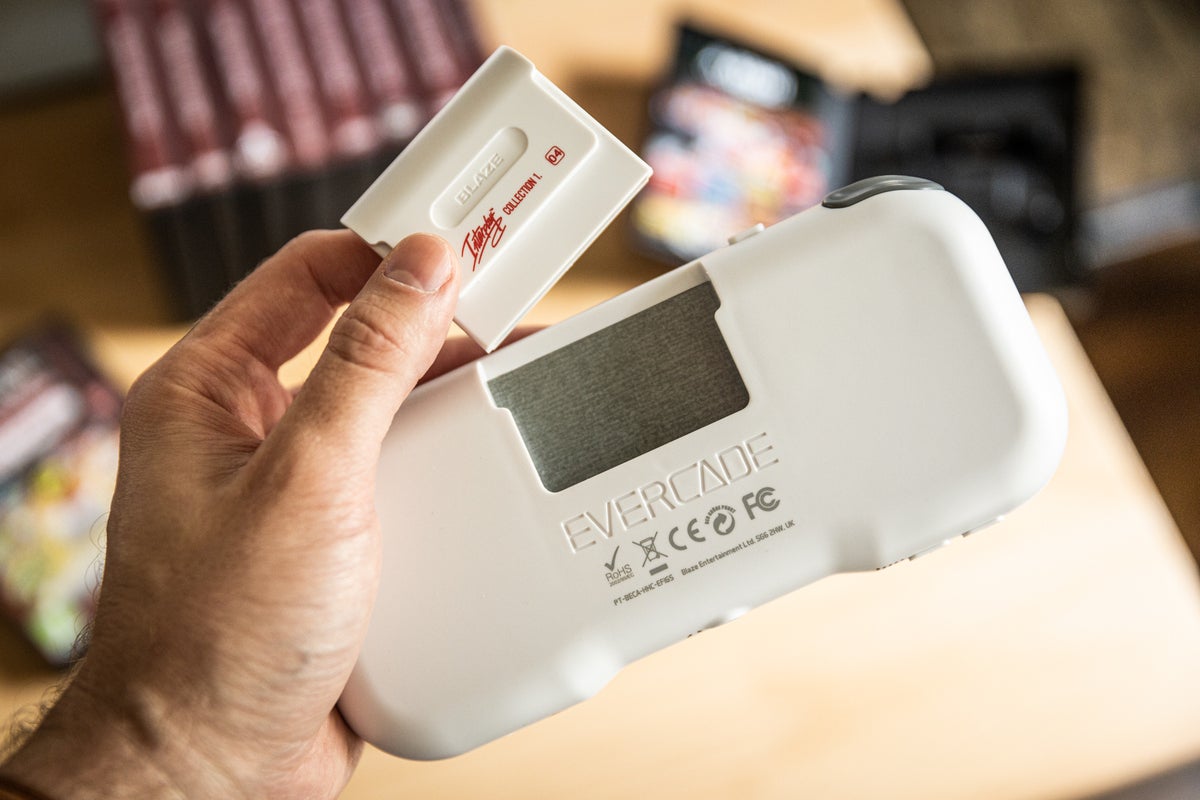 Hug dru Patrick James Augustus Murray/IDG
Hug dru Patrick James Augustus Murray/IDG Cartridges in 2020?!
You detected that right. The Evercade doesn't store ROMs on a Micro-South Dakota lineup like most handheld emulation devices. Instead, the society is producing physical cartridges similar the Gameboys of yellowed. Going cartridge-based serves a couple purposes. Firstly, it hearkens rachis to the days of classic physical media and it really tugs at my nostalgic heartstrings. Getting a magazine in a plastic case remindful of Sega Master System games, complete with an included manual, should definitely appeal to retro pun collectors.
Thomas More importantly, Evercade told ME the main reason for using cartidges is so they can deliver new content from late systems onto the console without needing to run a firmware update to the console itself. Microcode or bug fixes can equal deployed if needed through plugging the Evercade into a Microcomputer via the micro-USB port but, they neediness the experience to embody atomic number 3 plug and play equally workable.
Go-cart-based emulation also allows for an aper to be tweaked to sour better for a specific game/platform, sooner than the united-size-fits-completely set about found with other emulators. While information technology's amusive excavation into RetroArch to tweak emulation settings for each retro mettlesome connected your Raspberry bush Protease inhibitor, I trustfulness the minds at Evercade to aim for expedient settings per game—which has established true in my clock time with the device (more on it later).
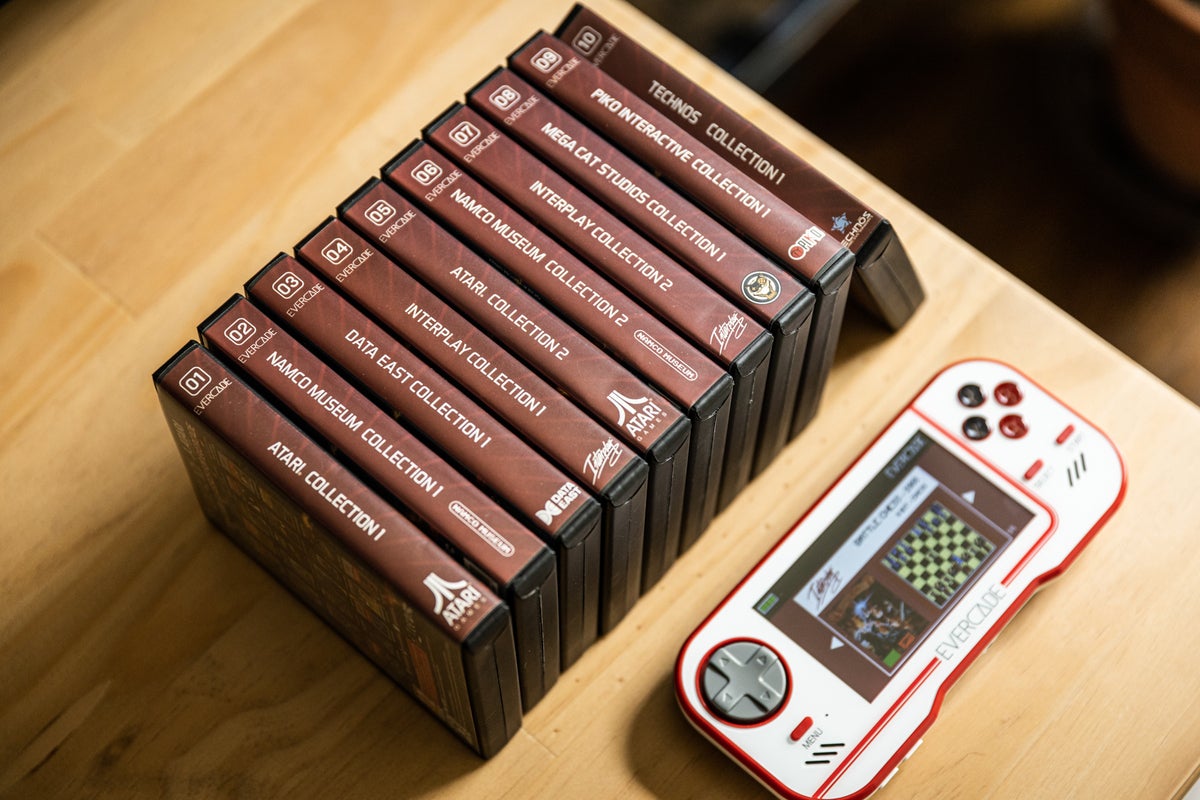 Robert Adam Patrick Murray/IDG
Robert Adam Patrick Murray/IDG The first 10 releases for the Evercade, with a nice number attached to from each one box.
All cart is publisher-specific and retails for $20, featuring between 6 to 20 games depending on the lineup. Evercade says IT will be releasing new cartridges at a fair pace, and you can see the up-to-date list of available games on the Evercade website, simply the company sent finished the first 10 releases for this review:
- Atari Aggregation 1
- Namco Museum Collection 1
- Data Eastern United States Collection 1
- Interplay Collection 1
- Atari Collection 2
- Namco Museum Collection 2
- Interplay Collection 2
- Mega Cat Studios Collection 1
- Piko Mutual Collection 1
- Technos Collection 1
Future releases include Atari Lynx collections 1 and 2, The Oliver Twins Aggregation, and a Xeno Crisis & Tanglewood two-fold game magazine, with more planned. Hopefully Evercade can solicit even larger publishers WHO have wide retrospective gaming catalogs like Konami and Capcom (I'll buy every interpretation of Castlevania III: Dracula's Curse under the Lord's Day) because in that location are glaring omissions. Regrettably some publishers like Nintendo would near likely ne'er concur to undergo their retroactive games come along on the Evercade. Going with full licensed cartridges definitely limits the Evercade's potential subroutine library compared to retro handhelds that expect you to stock your own (legally grey) appendage ROMs.
The console itself is sold in cardinal bundle configurations, 1 with the console and extraordinary go-cart (Atari Collection 1) which retails for $80, or with three carts (Atari Aggregation 1, Interplay Collection 1, and Data Eastward Collection 1) for $100.
How does the Evercade play?
The Evercade console's large size surprised me, especially compared to the other handheld devices I've reviewed lately. But after a bit of time with it in my men I realized just how much more comfortable it is—allowing ME to gamy for longer sessions. Yes, the size makes it harder to give up a pocket and go, but it's still super sleek and man-portable.
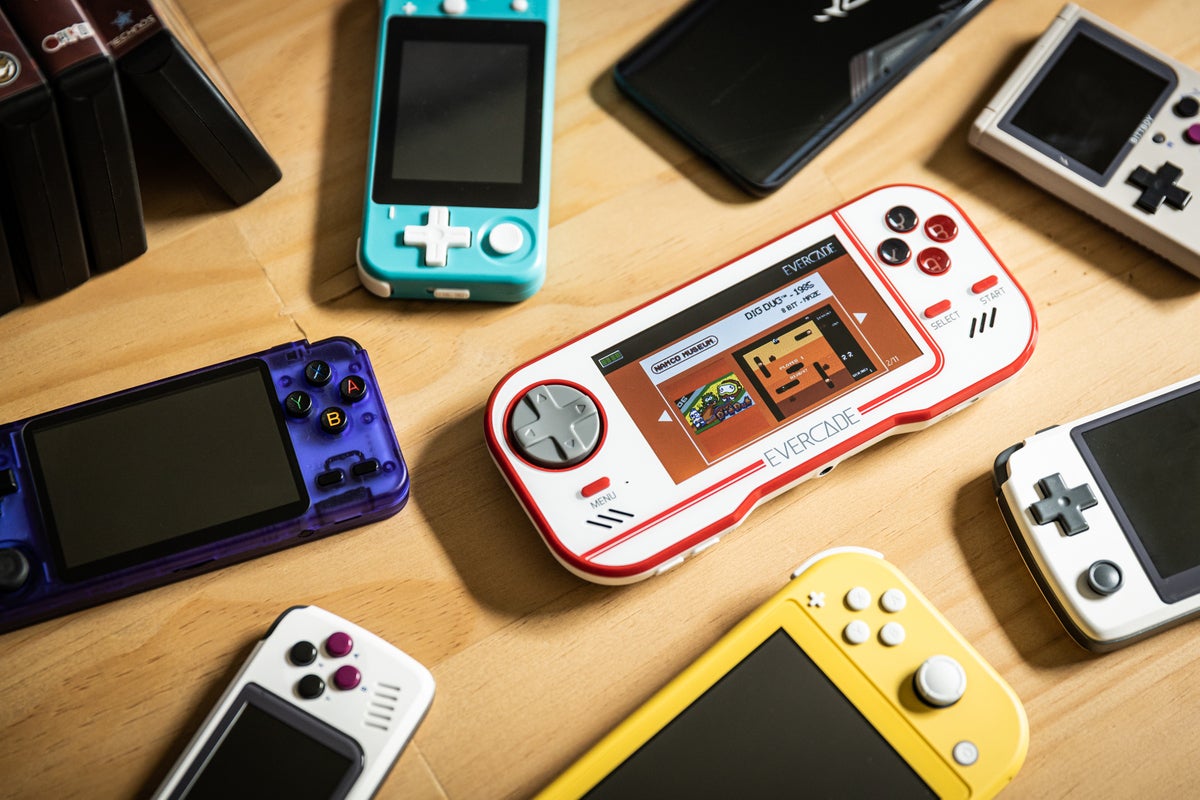 Adam Patrick Murray/IDG
Adam Patrick Murray/IDG The Evercade is larger than most handheld emulators merely still pocketable.
From hit the power switch to getting in game, things couldn't be more easy. Later on the splash screen you're greeted with a slideshow of titles available on your selected cartridge; just press a button to launch the game you want to play. As I said before, the Evercade's Limb processor has plenty of power to run games from the 8- and 16-bit era. I never encountered a single hitch in emulation, menu navigation, or loading save states.
Youget to hustle around with emulation settings in some games on other retro handhelds. Not the Evercade. Having the games take center stage without disturbing about performance was an right-down joy. Admittedly, I don't have extensive knowledge of most of the games in the catalog, but my gameplay experiences felt uncreased and uncolored. Tending the care that was put into each experience, and the work done directly with the publishers and developers, I flavour confident that the games were running as supposed. Merely father't take my word for information technology! Check into out this Digital Foundry analysis from someone World Health Organization understands the specialised nuances of ex post facto emulation on a much deeper level than I do:
When it comes to controls, I'm not a huge fan of the circular d-pad—not because of its shortcomings, but because of personal preference. IT offers plenty of go by and circular move but non enough clear characterisation between cardinal directions for my preference. I do love the feel of the slightly convex face buttons, however. They have a satisfying pres and "suction stop" upon wardrobe. Evercade's large buttons are definitely stiffer than virtually other emulation-based handhelds, but in a sturdy way that feels good. I wish there was many detachment between them, though—I often found myself accidentally off two buttons at the selfsame time.
My index number fingers rested easily along the length of the concave berm buttons. They're a morsel too sensative though, devising it unfortunately smooth to activate an unintentional press. I as wel wishing there was a bit more travel, but the click itself feels very satisfying.
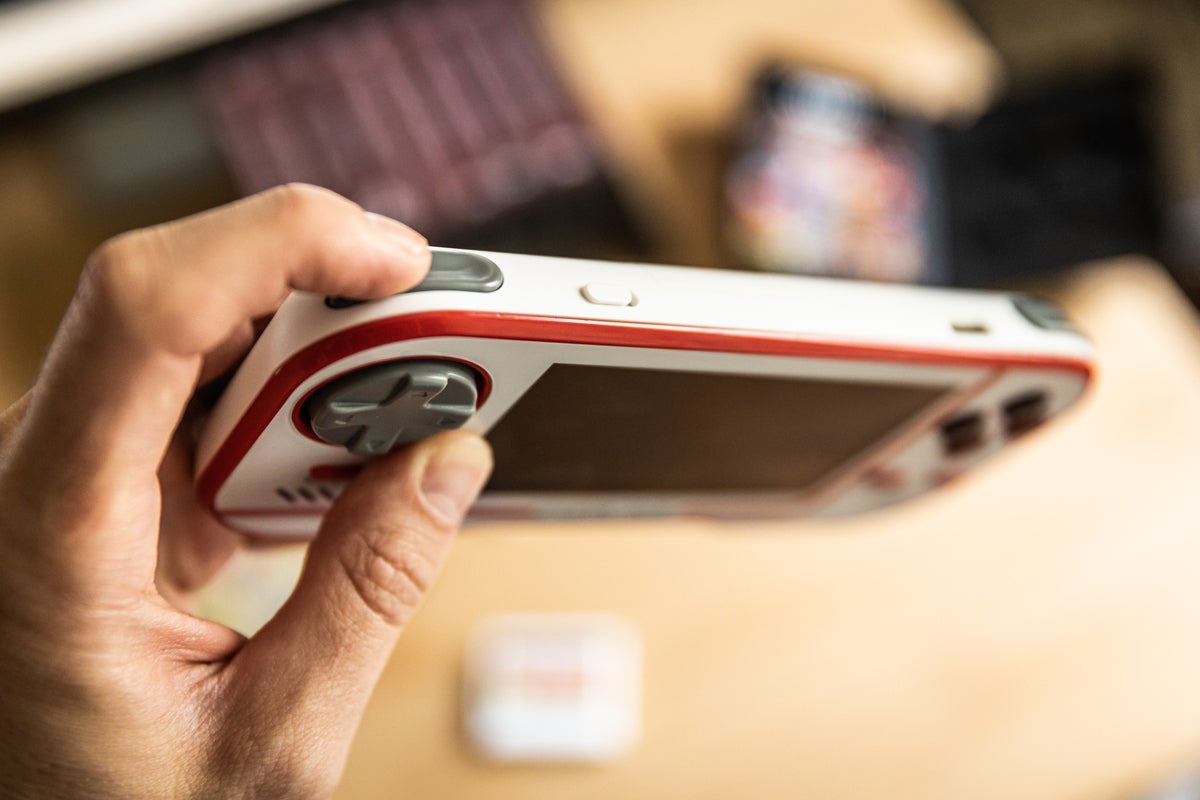 Adam Patrick Murray/IDG
Adam Patrick Murray/IDG Slippy the pickup in and away of the system is quite a a pain on our review unit, as the expansion slot that receives them is a trifle too tight. Other reviews mentioned it as substantially. Evercade assures ME that this volition equal punished during final product. I'm hoping that's the case because I missed out on the joy of slotting in a new cart into my handheld.
The Evercade includes a Miniskirt-HDMI left on the big top of the device to punch into a TV Beaver State ride herd on, and doing then turns off the integrated display. IT's recommended to plug the HDMI cablegram into the unit before powering on the handheld, because once it detects something plugged into that port, the software system restarts in lodg to switch outputs—you lav't seamlessly propel back and away like you can on the Nintendo Switch. Also worth mentioning: the first unit of measurement I was conveyed for review had a finicky port that caused the device to bring up at the slightest gibbousness to the cable. The second unit of measurement Evercade sent me didn't show that problem.
Altogether the Evercade's a solidly built device with plenty of internal horsepower to play more demanding games in the future. The classic design and esthetics give it a timeless feel, and the build select feels like it should hold ou for many years to come. No, it's not perfect, but for the most part I love playing on it.
WHO is the Evercade for?
Playing on the Evercade is a substantially different experience than victimisation separate handheld emulation devices. I think it will appeal to a smaller audience—but one that is many deeply invested with in the retro gaming experience. Even though I possess an panoptic Fixed storage library that I cargo onto every other retro device I have, I typically stick to playing the same handful of games I know and love. Sure, that's partially because I'm reviewing these devices, but it's also because in the face of most endless options it's easier to sink back out into a intimate game than to try something hot.
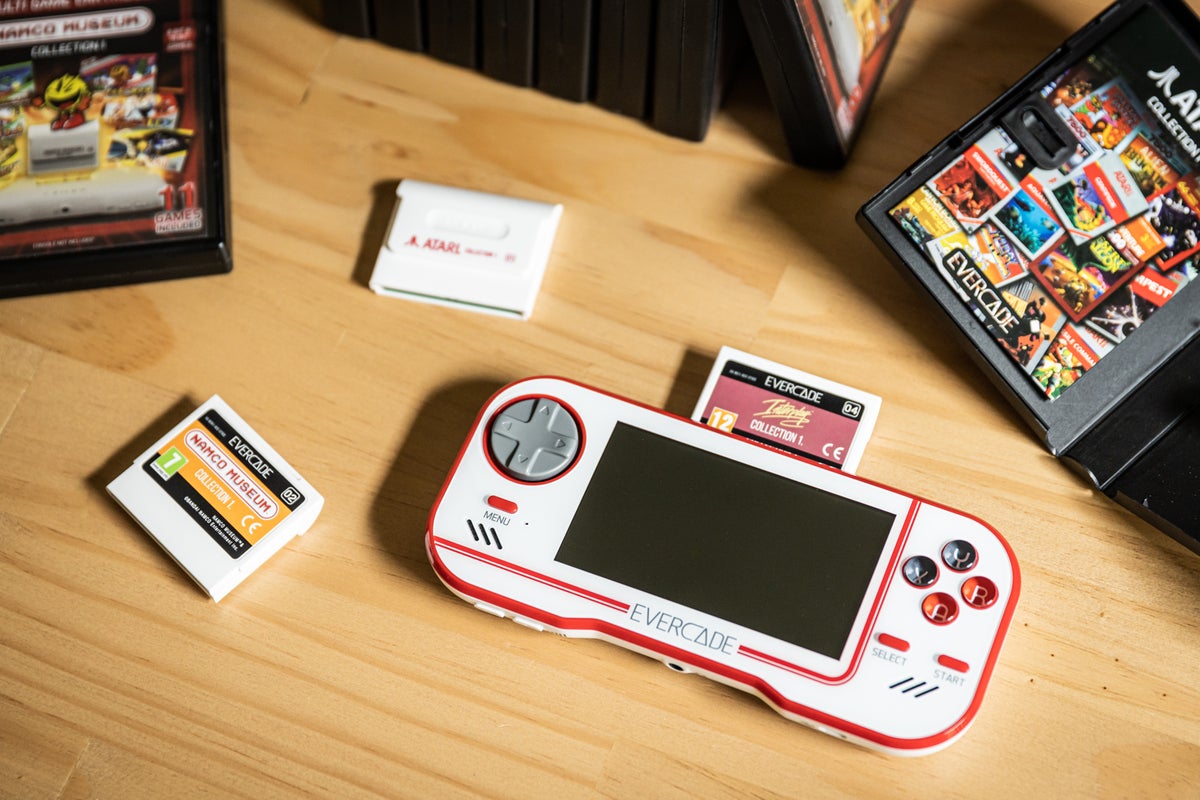 Adam St. Patrick Murray/IDG
Adam St. Patrick Murray/IDG But with the Evercade, I felt like I was posing pop with a hand-picked list of games that were professionally recreated for me to know—many for the first time. I recovered myself overmuch to a greater extent meshed in exploring the games on offer because they'ray served up in such a specific way. From slippy the cartridges out of their plastic cases, to reading the small blurbs for each game interior the printed manuals, to taking my time exploring each of the high-character games in these curated cartridges, using the Evercade felt like diving into a undersized-scale Standard Compendium of ex post facto games.
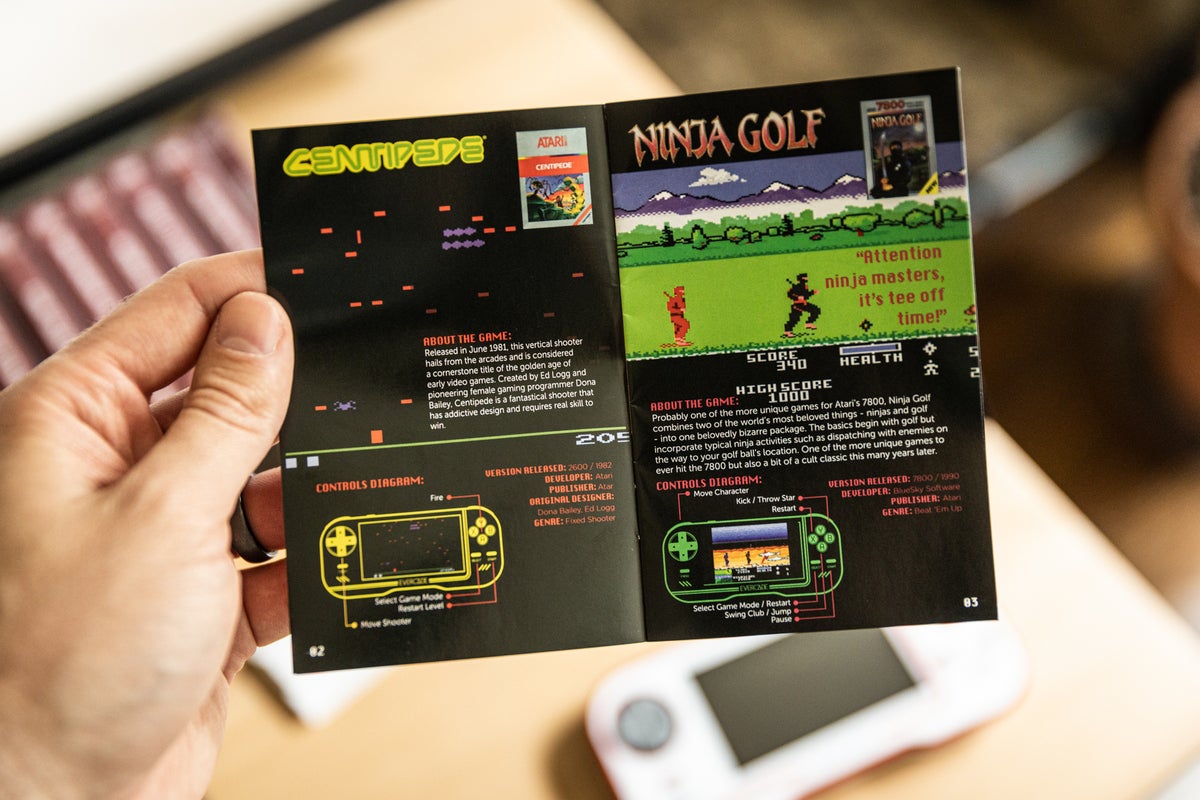 Adam Patrick Murray/IDG
Adam Patrick Murray/IDG Contempt version errors the manuals undergo loads of charm.
Beyond that, information technology feels good knowing that each of these collections were made with the participation of the actual unfit publishers—substance there is no legal gray area to care about. As a content creator myself, I'm excited to support the people involved in making games, and it's not often you get a chance to DO that with retro titles unless there are remasters mired. It also keeps you from having to scout around sketchy ROM sites to download the games you want to play (though you should be dumping your possess ROMs).
To wrap all those thoughts together, retro game enthusiasts who opt high-quality emulation and wish help support the companies involved volition probably get the about out of the Evercade.
Conclusion
I've reviewed several retro game emulation devices over the years—simply I've never had an experience like the one Evercade delivers.
From the physical design to the high-quality, fully legal emulation, the Evercade feels like a hand-crafted see that is much than the essence of IT's parts. Its strong point is also its anaemic point, though; the Evercade's future hinges along more cartidges being released so retro enthusiasts can expand their libraries. That same, piece there's no guarantee on how many cartridges will finish landing down the line, there's already a jolly incomprehensible catalog to dive into proper now.
Bottom line? This magical cartridge-based handheld is highly recommended for retro gambling connoisseurs.
Source: https://www.pcworld.com/article/393265/evercade-review-a-charming-cartridge-based-handheld-for-retro-gaming-enthusiasts.html
Posted by: applegatelont1943.blogspot.com

0 Response to "Evercade review: A charming cartridge-based handheld for retro gaming enthusiasts - applegatelont1943"
Post a Comment